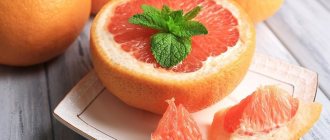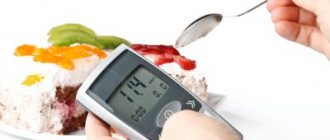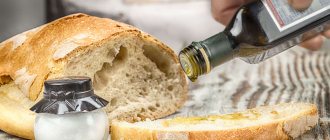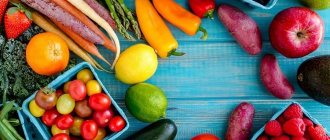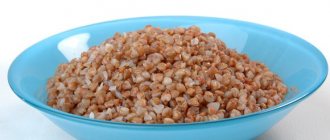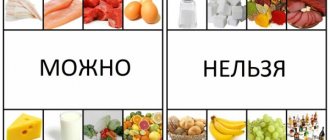249
Today we’ll talk about proper nutrition for type 2 diabetes, and consider what an approximate menu should be.
Diabetes mellitus is another metabolic disorder. It occurs due to improper absorption of glucose. It mainly occurs in people who are overweight (or otherwise called obese).
Regardless of the type of disease, it is very important to maintain a healthy diet. If the disease manifests itself in a mild form, then proper nutrition and adherence to a certain diet will be the main means of treatment. In other forms of the disease, the diet must be combined with the intake of insulin into the body.
Read more: Tresiba (degludec) human insulin analog – minimal risk of hypoglycemia
Tips for reducing sugar levels
Reducing sugar levels in diabetes mellitus can be achieved through a combination of physical activity, medication and a balanced diet. This balance will help:
- Maintain blood glucose, blood pressure, and cholesterol levels within target ranges;
- lose weight or stay at a healthy weight;
- prevent the development of complications;
- maintain good health and energy 1.
There are general rules for creating a diet to control sugar content:
- Plate rule. Take a plate with a diameter of 23 cm and mentally divide it into 4 equal parts. Half of it should be vegetables (except potatoes, peas and corn), a quarter should be lean proteins, and a quarter should be grains or other starchy foods1
- Minimizing sweetened products: sugary drinks are especially dangerous - lemonade, tea with sugar, industrial fruit juices2
- It is better to use fresh fruits and vegetables as snacks.
- Steam, stew, bake food in its own juice, without adding oil, as it increases the total calorie content3
Physical exercise
An important factor in the successful treatment of diabetes is daily physical activity. Before choosing a type of activity, you should consult your doctor to avoid worsening the condition. Even if your doctor prohibits you from engaging in active sports, you can choose cycling, yoga, horseback riding or just walking.
You just need to start with the simplest thing: walking in the fresh air several times a day. For patients suffering from sleep disorders, such exercises are especially recommended in the evening a few hours before going to bed.

You can gradually increase the duration and tempo. The most important thing is your well-being. There is no need to step outside your comfort zone. The main thing is that physical activity is not exhausting.
Nordic walking has become very popular. It is more energy-consuming than regular one. During such walking, more muscles are used, but a person feels this load more easily.
To prevent physical activity from being perceived as an “imposed routine,” you need to find something that would bring pleasure. Finally, you can invite your family and friends with you to make the time spent usefully enjoyable.
The difference between diets for type 1 and type 2 diabetes
In type I diabetes, the diet may have the usual calorie content typical for people of similar height and weight. The diet is supportive in nature and is clearly related to how much insulin a person living with diabetes consumes.
Type II diabetes is often accompanied by increased body weight, arterial hypertension, hypercholesterolemia and metabolic syndrome. Therefore, the diet is aimed primarily at reducing body weight. This is manifested in reduced caloric content of food, a decrease in the amount of fat and easily digestible carbohydrates in the diet.
But there are also common points: both groups of people require a complete, balanced diet of proteins, fats and carbohydrates, as well as vitamins, liquids and minerals 2.3.
How to reduce the risk of complications with type 1 diabetes
Rules to follow when creating menus 2.3:
- People can consume proteins and fats without restrictions (provided they have normal body weight and take into account calorie content). If you are overweight, it is recommended to limit the fat content in your diet.
- Most vegetables can be eaten with virtually no restrictions. Without counting your sugar levels, you can eat green leafy vegetables, zucchini, peppers, cabbage, and legumes, provided they are consumed in moderation (about 200 g per meal).
- Carbohydrates, which are found in grains (bread), fruits, some vegetables (potatoes, corn), milk and dairy products, and sugar, need to be taken into account. The system of bread units helps you count carbohydrates.
Authorized Products
Patients can eat black bread, but not more than 350 g throughout the day. Fish, meat and vegetable soups will be useful. You can eat meat, but not pork. It is acceptable to eat fish, but low-fat varieties, such as cod, carp, pike perch. You can eat almost any vegetables, as long as they are low in carbohydrates. These are radishes, eggplants, zucchini, carrots, cucumbers, lettuce.
Sweet, sour and sour fruits are recommended for consumption. However, their quantity per day should not exceed 200 g. Compotes can be made from them, but with sweeteners. You can eat cottage cheese - 200 g.
You can drink tomato juice, weak coffee and tea, but it is best to add milk. Juices are allowed, but without sugar content.
Throughout the day, you can eat or add butter to your dishes, but not more than 40 g. It is recommended to drink a decoction of rose hips as a vitamin drink.
Bread unit system
One bread unit is the amount of any product that contains from 10 to 12 grams of carbohydrates. This is exactly how much is contained in one piece of bread, which is why the units are called bread units (XE). You can find out their content in a particular product from special tables 2.
The bread unit system helps determine the dose of short-acting insulin, which is administered before meals. To do this, you need to measure your glucose level and count how many units the portion you plan to eat contains. According to recommendations, one serving should contain no more than 8 XE. Based on these data, the required dose of insulin 2.4 is calculated.
Fully or partially limited products
You can sometimes eat pork, but in jellied or boiled form. It is permissible to eat potatoes, but in a minimal amount and no more than once every 5-7 days. In this case, only boiled potatoes. Pasta is used according to the same principle, with a parallel reduction in bread in the daily menu.
You can eat eggs, but no more than 2 eggs a day and, of course, not fried. With the permission of the attending physician, the use of yogurt, milk and kefir is allowed. But in any case, these products should not be more than 2 glasses.
Diabetes mellitus type 2: nutrition principles
The diet for type 2 diabetes mellitus depends on body weight: with normal weight, the number of calories should correspond to expenses, with increased weight, it should be lower than them (low-calorie diet, hypocalorie diet).
Basic principles of nutrition for type 2 diabetes 3-6:
- Food should be rich in fiber, which inhibits the absorption of sugar, preventing a sharp increase in blood glucose levels. This is achieved due to the high content of vegetables in the diet. On average, the level of fiber in the daily menu should be from 20 to 40 grams.
- When preparing food, it is better to keep cooking to a minimum. It is important to remember that when grinding or heat processing carbohydrate-containing products, glucose is absorbed much faster.
- Sugar and products containing it, including tea and coffee with sugar, should be limited as much as possible.
- Sweeteners can be eaten in moderation, taking into account calorie content. Non-caloric sweeteners saccharin and aspartame can be consumed as needed. The so-called sugar analogues xylitol, sorbitol, and fructose are rich in calories, so they are not recommended for overweight.
- Alcohol is harmful to health, including diabetes. It is high in calories—1 gram of pure alcohol contains 7 kcal—and may contribute to weight gain and poor diabetes control.
Principles of a low glycemic load diet:
This diet is based on the fact that a person must adhere to a certain glycemic index of foods throughout the day. GI - glycemic index - shows the human body’s reaction to a particular product, in particular, how products affect blood sugar levels.
On the Internet you can easily find a ready-made table with products and GI. A high GI value means that such foods are not suitable for consumption by diabetics, and a low one means the opposite.
Let's see what the main features are that distinguish this diet from the basic one - “table No. 9”, and why exactly it allows diabetics to become healthy and happy.
- The GL index (glycemic load) should be up to 45 units per day.
This indicator, evenly distributed throughout the day and with the addition of protein foods, is the most optimal so that you are not hungry, do not gain weight, and your blood sugar is normal.
The diet should start with 40 units per day, and only after 2 weeks can the GL be increased to 45.
- Eat small portions, but often.
GN can be divided as follows: 10 units will be for breakfast, 5 units for a snack or second breakfast, then again 10 units for lunch, again 5 units for an afternoon snack, again 10 units for dinner and 5 units for desserts or drinks.
- Reduce the amount of carbohydrates consumed and increase the amount of protein.
This does not mean at all that you should give up carbohydrates and eat only meat, because a person in any case needs a small amount of glucose, which comes with carbohydrates into the body.
Well, if there is only one protein, then it can harm your kidneys and bones. Therefore, we discard extremes, switch to “complex” carbohydrates, which very slowly release the sugar they contain, and consciously increase the consumption of protein foods and generally reduce carbohydrate foods in our diet.
- We eat carbohydrates together with proteins.
As mentioned above, you should eat a lot more protein, but not just like that, but every time you eat carbohydrate foods, since it is protein that helps carbohydrates be absorbed much more slowly.
For example, a good combination is egg plus beans and whole grain toast, but a very bad combination is toast with jam. It is better to eat an apple with a handful of nuts or seeds, because the protein contained in the latter products will reduce the glycemic load.
Also, the combination of protein foods and healthy fats does an excellent job of reducing the GL of food consumed.
A very important principle to remember: anything that slows down the release of sugar from food will reduce your GL .
To more clearly demonstrate the glycemic load, we give below an example of products in the form of a table, where the GL of each serving is the same and is 10 units.
And we see that it is better to eat, for example, 2 baskets of strawberries (about 600 g) than just 2 dates, only after tempting your appetite with the latter.
| Low glycemic load | High glycemic load |
| 4 small cans of tomato juice | 1 small can of cranberry juice |
| 2 slices whole grain rye bread | 1 slice white bread |
| 2 large baskets of strawberries | 2 dates |
| 1 large cup peanuts | 1 bag of chips |
| 1 packet of orange juice | 1 glass of energy drink |
| 3 cups porridge (no sugar) | 1 cup corn flakes |
- And a few more secrets on how to maintain normal blood sugar levels and regulate appetite , and of course, be healthy:
- you need to eat oats, as well as shiitake mushrooms and barley to get beta-glucans;
- make a series of different grain products - eat both wheat and rye and barley;
- legumes should become a regular product on your table (and this includes beans, legumes, lentils and much more);
- discover all the wonderful qualities of quinoa grains for your body;
- To prevent cardiovascular disease, snack on chia seeds, raw almonds or walnuts;
- to normalize the functioning of the pancreas, be sure to make pumpkin and zucchini dishes on a regular basis;
- the best fruits for you now are blueberries, blackberries, gooseberries, plums, cherries, pears and apples because they contain the lowest amount of sugar;
- and finally, add a spoonful of cinnamon to your whole grain breakfast every morning (it’s also great for soups and baked goods).
Thus, we see that with type 2 diabetes you can eat even better, healthier and tastier without experiencing hunger.
And we study all these issues in detail in our Unique 90-day Program:
An example of this is my favorite recipes for dishes that follow the rules of a diet with a low glycemic load:
Oat pancakes
Ingredients (for 2 servings, where one is 5 units of GN): 75 g of oatmeal, which was previously ground in a coffee grinder, 1 egg, 125 ml of soy milk with a small amount of water added, 1 tsp. cinnamon, 1 piece of butter or 1 tsp. olive oil.
Mix all ingredients and beat with a whisk or blender, fry like regular pancakes on each side. These pancakes can be deliciously eaten with a drop of honey, berries and 1 tablespoon of yogurt. And the total GN will be 9 units.
Bean and bell pepper salad
Ingredients (for 1 serving GN = 3): 2 eggs, 200 g French beans, 1 red onion, finely diced, finely chopped 2 fried bell peppers, a handful of olives (also halved), 1 tsp. red wine vinegar, 1 tbsp. olive oil, sea salt and ground black pepper.
It is necessary, first, to cut the boiled eggs into cubes, the beans should be steamed until half cooked. Drizzle the beans with oil mixed with vinegar and seasonings, then add all the remaining ingredients from the list. Instead of beans, you can also use young green peas or green beans.
Nutritional Guidelines to Reduce the Risk of Complications in Type 2 Diabetes
To reduce the risk of developing cardiovascular complications, as well as normalize lipid metabolism, it is important to follow several more principles of a healthy diet 2-6:
- Reduce saturated fat: it should not account for more than 10% of your total daily calories. Red meat, dairy products, baked goods, fast food, egg yolks, and sausages are rich in saturated fats.
- Unsaturated fats should be consumed in required quantities. They are found in vegetable oils, fish, nuts, and seeds. About 2/3 of the total amount of fat should be of vegetable origin - olive and other vegetable oil.
- The salt content must be reduced to 5 grams per day, and in the presence of edema - to 3 grams.
Nutrition rules for every day

- Eat more dietary fiber. There is evidence of a reduction in mortality in people with diabetes when fiber is added to their diet (at least 14 g per 1000 g of food eaten).
- Limit the content of trans fats as much as possible: on product labels they are designated as “hydrogenated vegetable fats”, “margarine”, “milk fat substitute”, etc. 8
- Reduce the amount of sugars, refined grains and high-starchy foods.
- Replace sugar with sweeteners.
- Give preference to whole foods. 9

